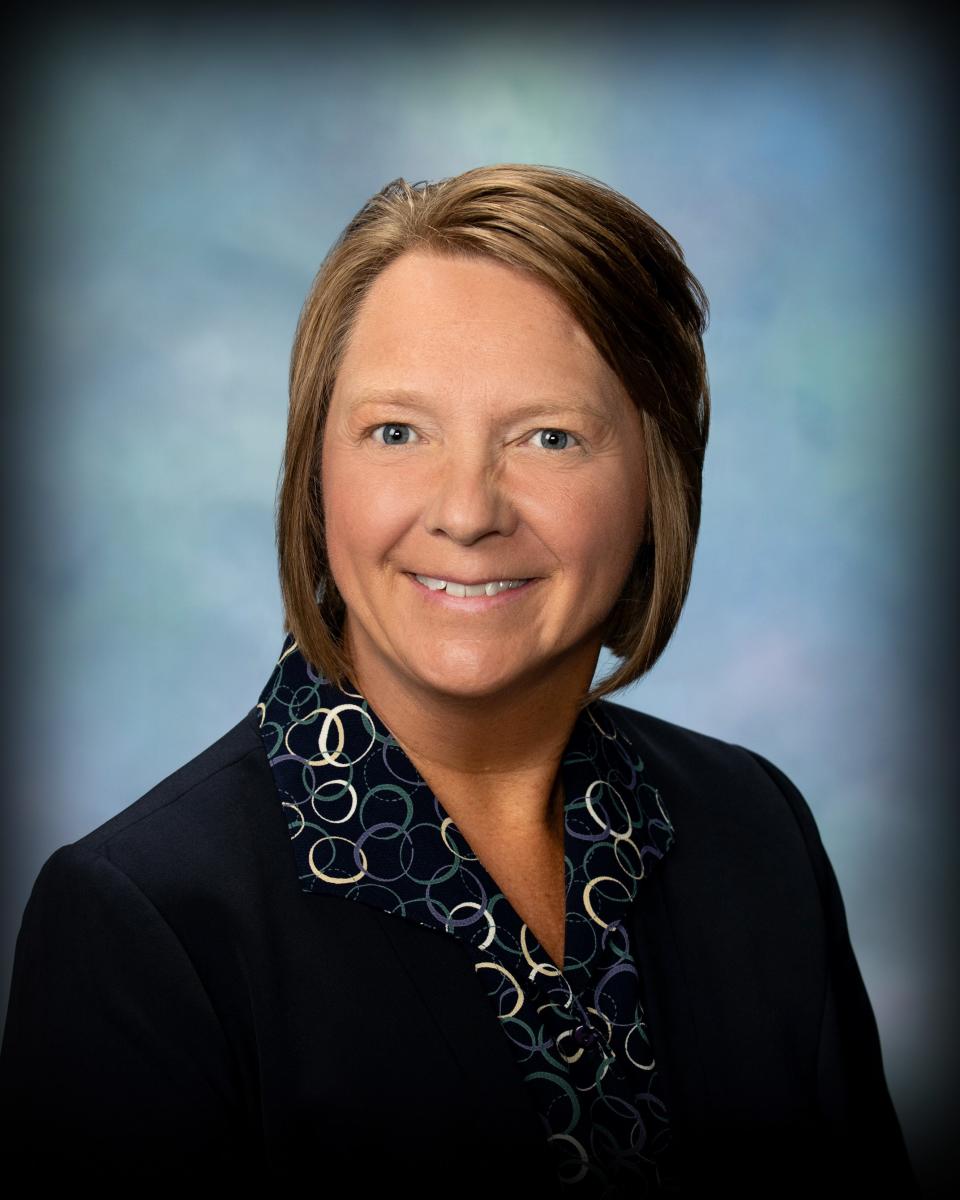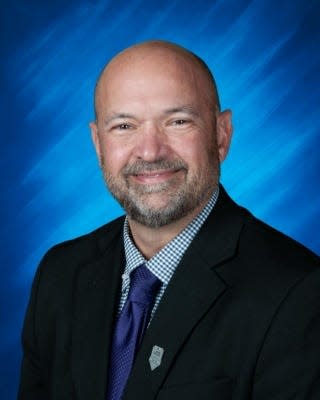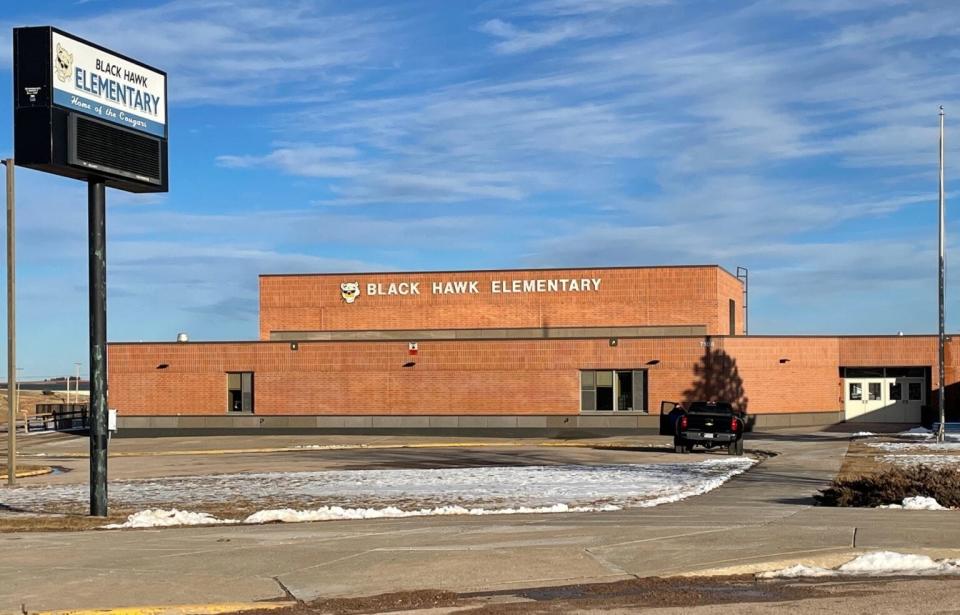Shortage of classroom substitutes makes teaching and learning more difficult in South Dakota

A shortage of substitutes to fill in for full-time teachers is forcing school districts in South Dakota and across the country to take sometimes drastic measures to keep classrooms staffed.
And concerns are rising that the quality of student education may diminish as a result.
Many full-time teachers are losing planning and training time to fill in for absent colleagues. Some classes are being combined, resulting in higher staff-to-student ratios. A few South Dakota schools have closed temporarily or shifted to virtual learning via computer because of teacher absences and limited substitutes to cover for them.
The number of available substitutes has been dropping steadily for several years in many school districts, as fewer people want to take on the challenge of teaching a group of students they don’t know in a subject in which they may not be well-versed.
The COVID-19 pandemic has turned the substitute shortage into a crisis in some districts.
As the pandemic lingers, and the highly contagious omicron variant of the coronavirus has become dominant in South Dakota, more full-time teachers are out sick with COVID-19 or staying home to care for ill or exposed children than normal, increasing the need for substitutes. Meanwhile, many former substitutes — especially those who are retirees and at greater risk of COVID-19 complications — do not want to take the risk of teaching indoors with dozens of children. Education experts also say working as a substitute teacher has become less attractive, as some American children have become more assertive and less respectful of teachers than in the past.
More NewsWatch: Child hospitalizations, long-COVID concerns rise amid omicron surge in South Dakota
Furthermore, a general worker shortage has given potential substitutes far more options to work where and when they want, in some cases for higher pay and benefits.
To attract more substitutes, some school districts have increased pay or reduced educational requirements for applicants.
In Sioux Falls, the state’s largest school system, the district has dropped its requirement that substitutes have a college degree, now requiring only a high school diploma. In January 2022, the district increased daily pay for substitutes from $125 to $160 at most schools, from $140 to $175 at high-need schools and from $150 to $190 per day for long-term subs.
“When unemployment is low, getting substitute teachers is tricky,” said Becky Dorman, human resources director for Sioux Falls schools.

Becky Guffin, superintendent for the Aberdeen Public School District, said finding substitute teachers for classes is a daily struggle. With a number of winter illnesses circulating, she said, some of the need is related to COVID-19, but others are not.
The story is similar in Watertown, where the pandemic and illness has taken a toll on staff and students alike.
“If there are people who want to help substitute, we will take them,” Superintendent Jeff Danielson said recently. “Our principals have been doing a good job all year having coverage when we need it, but we are piecing it together right now.”

The shortage of both full-time teachers and substitute teachers has raised concerns among education experts that the quality of teaching and depth of learning may be suffering across the U.S. public school system.
“A shortage of substitute teachers, both in quantity and quality, across the country has never been more severe,” wrote Geoffrey Smith, director of the Substitute Teacher Training Institute at Utah State University, in a recent article for the national School Superintendents Association website.
Substitutes play a critical role in maintaining educational consistency for children who are in their formative learning years, said Dennis Fischer, superintendent of the Hot Springs School District in southwestern South Dakota.
“When a teacher is out, we still need learning to take place because we only have 36 weeks of teaching per year,” Fischer said.
When schools have limited options to fill teaching slots, administrators acknowledge they may sometimes be forced to bring in someone who serves mostly as a classroom attendant.

In most cases, however, school officials do their best to fill open classroom slots with qualified, experienced substitute teachers who keep learning on track.
Joel Bailey, superintendent of the Platte Geddes School District in southeastern South Dakota, said he once read an estimate that each public student will on average be taught by substitutes the cumulative equivalent of one year of their K-12 education.
“The effectiveness of subs in the classroom is extremely important,” Bailey said.
Classes combined or moved to virtual learning
At some point, if teacher absences rise and enough substitutes cannot be found, school districts must close schools and transition to virtual teaching via computers. Rapid City Area Schools shuttered three schools temporarily in January because of high staff absences.
Also in mid-January, an outbreak of COVID-19 prompted the Hot Springs district to move to virtual learning for its secondary school that houses grades 6-12.
“We could not get all the classrooms filled,” Fischer said. “We did have a shortage of staffing and a shortage of subs that caused us to go virtual.”
Full-time teachers in Hot Springs, as in many South Dakota school districts, have sacrificed planning periods to cover for absent colleagues.
In some cases, three classes of children in Hot Springs have been combined into two larger groups when teachers and substitutes were scarce, Fischer said.
More NewsWatch: South Dakota returns millions in unused housing assistance funds to federal government
On rare occasions, when instructor absences were particularly high, four or five classes of children have been sent to the school library, where they work on homework and are supervised more than being taught, Fischer said.
“We were supposed to be socially distancing, but we were packing people into the library, which was really a last resort,” he said.
Substitutes in Hot Springs must have a college degree and pass a background check, Fischer said. Base pay is $90 per day, but those who have a teaching certification are paid $100 per day, and can make even more if they become a long-term substitute who may cover for a teacher out for a week or several weeks, Fischer said.
“It’s a very difficult and challenging job, and It takes a certain type of persona and personality to just step in with these kids,” Fischer said. “Some of our kids will challenge the subs and they have to know how to handle that.”
New incentives sought to lure subs
The South Dakota Department of Education does not keep track of teacher or staff absences and has no significant role in arranging substitute teachers, a task handled at the local school level, said Ruth Raveling, spokeswoman for the department.
Raveling said the department and office of Gov. Kristi Noem are working to improve overall teacher staffing in South Dakota by supporting a 6% increase in state aid to education, which Noem suggested should be used to raise teacher salaries and aid recruitment of new educators.
The Sioux Falls schools have begun to incentivize substitutes to teach more days by offering contests in which subs can win $100 retail gift cards and are entered more often if they work more days, Dorman said.
The district currently has a pool of more than 800 potential substitutes, but still has had difficulty covering classroom positions during the pandemic, Dorman said.
The district of about 24,000 students has about 1,900 teachers and 400 educational assistants, and it is not uncommon to have 285 teaching absences each day, Dorman said.
More NewsWatch: Child care crisis in South Dakota hurting families, employers and state economy
Substitutes in the Sioux Falls school district undergo four hours of in-person training before starting in the classroom and are offered an optional eight-hour online training course by the district.
The lack of available substitutes has cut into the time full-time teachers are able to undergo training that makes them better teachers, Dorman said.
A flexible, fulfilling position for some
For some substitute teachers, the job provides a great way to earn extra money, have a highly flexible work schedule and work closely with children, according to Elizabeth “Liz” Campbell, an experienced substitute teacher.
Campbell has worked as a substitute teacher for several years, the last three in Hot Springs where she fills in mostly in the elementary school.
Subbing works out well for Campbell, 43, because she has prior teaching experience and her four school-age children attend the Hot Springs schools. She said she enjoys teaching young children and has received strong support and respect from teachers and administrators in the Hot Springs district.
Managing a classroom of students who are unknown to the substitute is challenging and may turn some people away from the job, Campbell said.
Campbell said she understands why some potential substitutes have turned away from the profession, especially in larger districts or more urban areas where children may be less respectful than in a small town like Hot Springs.
“There’s definitely a change you see in the respect from kids,” said Campbell, who has also worked as a sub at an inner-city school in Kansas City.
The uncertain work schedule and lack of benefits may also turn some people away from subbing, she said.
— This article was produced by South Dakota News Watch, a non-profit journalism organization located online at SDNewsWatch.org.
This article originally appeared on Sioux Falls Argus Leader: Shortage of substitutes makes teaching and learning more difficult

